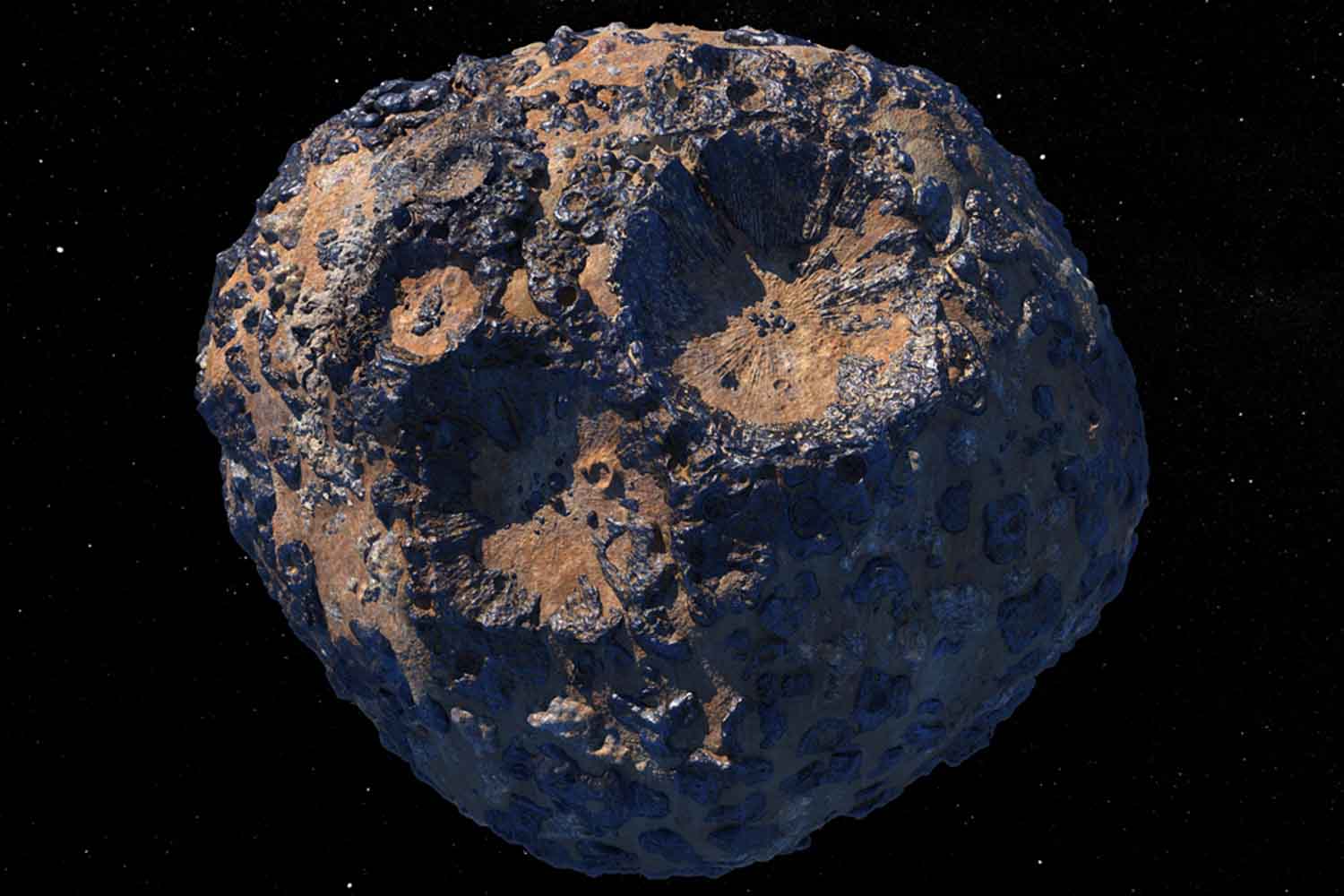NASA studies asteroid 16 Psyche, rich in metals and gold: between sensational estimates and scientific research, the debate opens on the future of space extraction and the birth of rocky planets

Table of contents
NASA has turned the spotlight on asteroid 16 Psyche, a space colossus orbiting in the belt between Mars and Jupiter. With its diameter exceeding 124 miles (200 kilometers), this celestial body has captured scientists’ attention not only for its unique metallic composition, but also for hypotheses related to its potential value.
Unlike most asteroids, which are predominantly composed of ice or rock, Psyche appears to contain between 30% and 60% metals, including iron, nickel and — according to some estimates — significant quantities of gold. Astronomers believe it may be the core of a primordial planet, left exposed after a catastrophic collision that occurred billions of years ago.
The NASA mission and the myth of Psyche’s “700 quintillion dollars” in gold
NASA’s Psyche Mission has no economic goals: the objective is exclusively scientific. The probe, launched in October 2023, will reach the asteroid to analyze its magnetic field, gravity and surface composition, with the aim of reconstructing the origins of rocky planets and better understanding the history of our solar system.
Yet, around Psyche, sensationalist estimates and calculations have multiplied. Some articles have spoken of a hypothetical value equal to 700 quintillion dollars, calculated by adding up the commercial value of iron, nickel, gold and other metals if they were available on the terrestrial market. A figure so high it surpasses any imaginable economy.
Experts clarify, however, that these numbers are highly speculative: we don’t know with certainty how much of the asteroid is composed of gold, nor whether it would be possible to extract it. Moreover, such an introduction of precious metals would cause prices to collapse and nullify any economic estimate.
Space extraction: still a distant prospect
Dreaming of extracting metals from asteroids remains, for now, science fiction. The enormous distances, prohibitive costs and absence of suitable technologies make it impossible to imagine Psyche as an exploitable mine. Added to this are legal uncertainties: there is not yet a clear international framework on who could claim ownership of space resources.
However, the discovery of Psyche fuels a debate that will become increasingly relevant: space as a new frontier for natural resources. Studying it means not only measuring the value of metals, but also collecting fundamental data to understand how planets formed and how Earth developed its internal structure.
A natural laboratory for understanding the past of planets
Beyond the fascination linked to gold, Psyche represents a window into time. Analyzing its surface and composition means observing a primordial fragment that could reveal what planetary cores looked like before collisions and evolution transformed them. In other words, a unique opportunity to study “live” the original building blocks of the solar system.
The Psyche mission, therefore, will not bring gold to Earth nor make everyone millionaires, but it will offer invaluable knowledge: a scientific treasure far more concrete and lasting than any economic valuation.
Source: NASA
